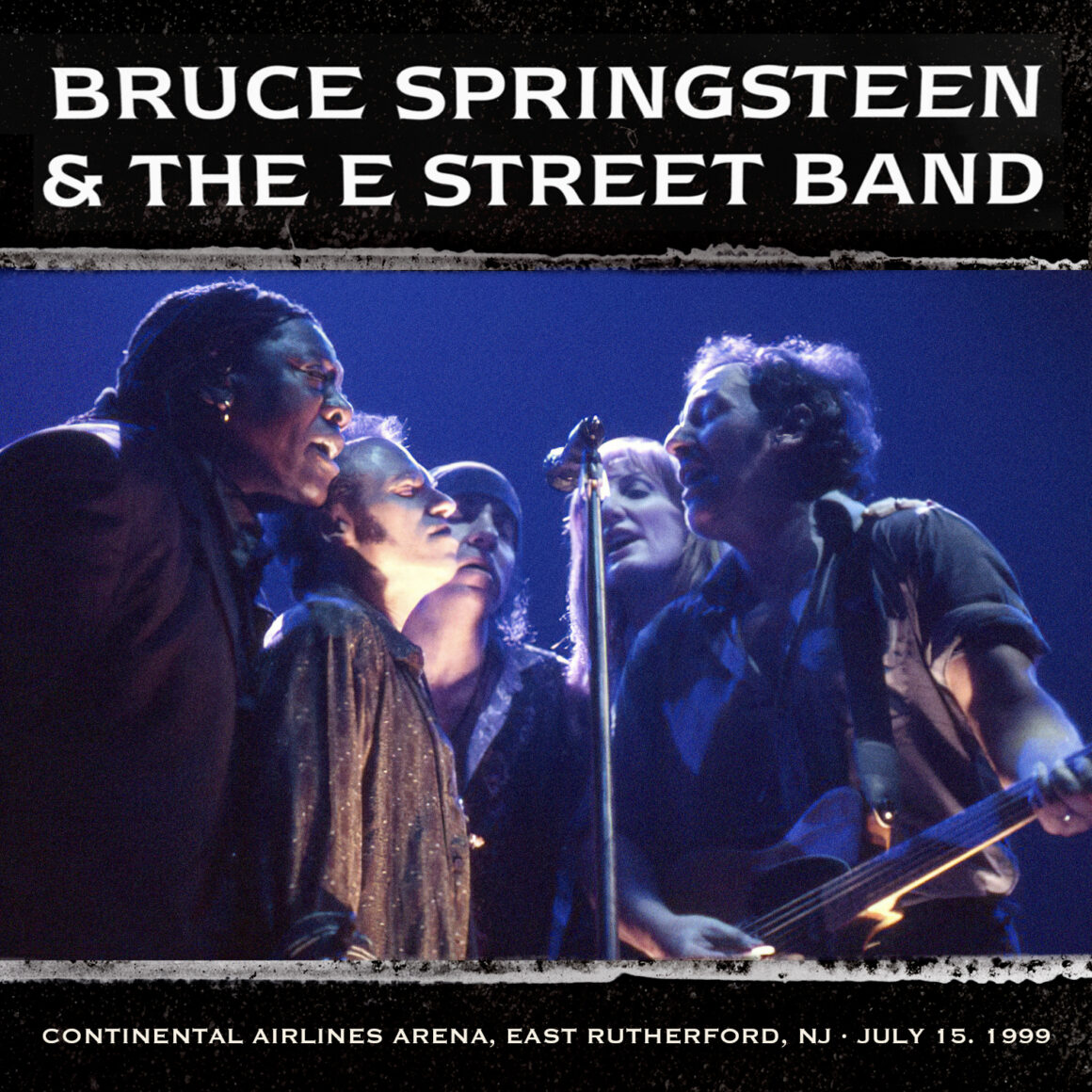
I Hear The Guitars Ringin’ Out Again
By Erik Flannigan
When news first emerged in late 1989 that the E Street Band had been dismissed indefinitely by Bruce Springsteen, it began nine years of uncertainty and speculation as to when, if ever, they would join forces again. They did come back together to record new material for Greatest Hits in 1995 and undertook a small series of promotional appearances in support of it, but the fact that they parted ways again without touring only made the odds of a full return feel even longer.
It was the release of Tracks box set in 1998 that would ultimately serve as the catalyst for what Shore Fire Media’s December 8, 1998 press release deemed was indeed a “reunion tour.” Our long, cold E Street winter was finally coming to an end, but not before Bruce and the band took the unprecedented step of starting a tour in Europe, which meant U.S. audiences would have to wait until summer to see their heroes.
This is the backdrop to July 15, 1999, the first U.S. arena show of the Reunion era and the earliest professional recording of the tour. Having been fortunate enough to attend the show, I can attest to the heightened anticipation in the building before the house lights went down, excitement you can hear just before Springsteen says, “Good evening, New Jersey. We’re gonna bring it to you.”
What follows is an exemplary and evolving performance that finds the men and women of E Street road-tested and ready for action, playing a 26-song set that follows the structural blueprint that would underpin the entire Reunion tour.
Born in the U.S.A. outtake and Tracks-essential “My Love Will Not Let You Down” opens the show, captured in an appealingly guitar-soaked mix by Jon Altschiller. For those of us seeing the Reunion tour for the first time, a triple whammy was in play: the E Street Band was back on stage for the first time since 1988; Stevie Van Zandt was standing stage left, officially rejoined after a 17-year absence, and Springsteen was playing outtakes many of us never dreamed would feature in a setlist, let alone open a show.
It wasn’t just Van Zandt who “might have been right all these years” about Springsteen’s treasure trove of previously unreleased material: here was “My Love Will Not Let You Down” (which, like other songs here, had circulated in mediocre sound among collectors on cassette in the mid-1980s) serving as the show’s storming start.
The first six songs of the set are sharp and provide endearing showcase moments to members of the band: Clarence Clemons blasting a big solo on “The Promised Land,” Stevie sharing vocals on “Two Hearts,” Nils Lofgren doing the same on “Darlington County,” Roy Bittan leading “Darkness on the Edge of Town” while Max Weinberg pounds away on drums, and Phantom Dan Federici pulling out the accordion for the first time in decades on a rearranged “Mansion on the Hill” which spotlights Miss Patti Scialfa on backing vocals.
Reunion needed to strike a balance between familiar and fresh and Springsteen largely got it right. Eight songs had never featured in an E Street Band show before 1999, including wonderful Tracks-liberated outtakes “My Love Won’t Let You Down” and “Where The Bands Are,” which was arguably even a bigger jaw-dropper to hear live having been cut for The River. Another BIUSA outtake, “Murder Incorporated,” had already become a showstopper in Europe; with nine-cylinder E Street power, it crushes here.
An electrified “Youngstown,” a faithful “The Ghost of Tom Joad” and a stately reading of the Oscar-winning “Streets of Philadelphia” (with solemn backing vocals from Van Zandt) brought Springsteen’s recent solo work into the fold, while vocal turns from Nils, Steve, Patti and Clarence recast “If I Should Fall Behind” from 1992’s Lucky Town as an E Street spiritual.
The encore features two other newcomers: the Joad-tour bred “Freehold,” Springsteen’s hilarious and poignant hometown confessional, and the first new E Street Band original of the Reunion era, “Land of Hope and Dreams,” which doubled as a mission statement for the entire tour and resurrection of the band.
The rest of the set is composed of classics and album cuts, some substantially rearranged like “The River,” while others offered nifty, subtle changes like the intros to “Darkness on the Edge of Town” and “Working on the Highway.” A feeling of renewed commitment even comes across in every-nighters like “Out in the Street,” “Born to Run” and “Bobby Jean” which are played reverently at this point in the tour.
This recording’s hot guitar mix and a strong lead vocal give “Backstreets” a charge of vitality and the fiery performance make this one of the night’s standouts. Similarly, “Badlands” is buzzed by electric guitars, reinvigorated to the point where you sense the joy that the E Street Band is feeling to play it together again.
Because it stands as the start of Springsteen’s modern era, our perception of the Reunion tour is well established 24 years later. But listening to this earliest U.S. performance, the rebirth of the E Street Band is more thrilling to hear than you may remember.
For a limited time, save on a year of live music streaming! Enjoy unlimited access to all the exclusive Bruce Springsteen archival releases, and more from your favorite artists.